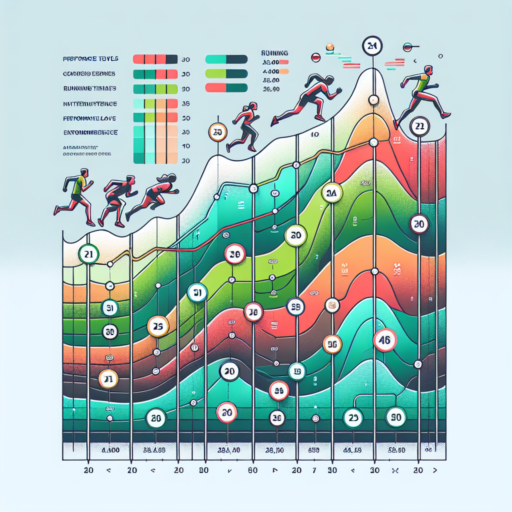Is VO2 max 5k pace?
Understanding the relationship between VO2 max and your 5k pace is essential for runners who aim to improve their performance. VO2 max, or maximal oxygen uptake, is the maximum amount of oxygen your body can utilize during intense exercise. It is a critical factor that can determine an athlete’s capacity to perform sustained aerobic exercise. But how does it translate to your 5k pace?
The 5k pace is heavily influenced by your VO2 max because it reflects your aerobic endurance capacity. A higher VO2 max generally indicates a better aerobic system, potentially allowing for a faster 5k time. However, it’s crucial to note that VO2 max is not the sole determinant of your 5k performance. Other factors, such as lactate threshold and running economy, also play significant roles. Training to improve your VO2 max can, indirectly, help you achieve a faster pace in a 5k race.
While aiming to boost your 5k performance through VO2 max improvements, incorporating interval training and tempo workouts can be highly effective. These training methods enhance both your VO2 max and your body’s efficiency in using oxygen at high speeds. Remember, the goal is not just to increase your VO2 max but to improve how well you maintain your 5k pace with an optimal oxygen consumption level. Your training should therefore be tailored to address these interconnected aspects of running performance.
What is the best VO2 max intervals for running?
When considering how to improve your running performance, focusing on increasing your VO2 max through effective interval training is key. VO2 max, the maximum amount of oxygen your body can use during intense exercise, is a critical factor for endurance runners looking to enhance their speed and stamina.
Understanding VO2 Max Intervals
Interval training designed to boost VO2 max generally involves short bursts of high-intensity running followed by a recovery period. These workouts are incredibly effective at pushing your cardiovascular system to adapt and improve. A popular format for these intervals is the 2:1 ratio of workout to recovery time. For instance, running at an all-out pace for 4 minutes followed by 2 minutes of jogging or walking constitutes one interval.
Enhancing your VO2 max with intervals starts with incorporating sessions that are specifically tailored to reach above 90% of your maximum heart rate. Such intense intervals could include running at your maximum effort for 3 to 5 minutes, ensuring a full recovery in between each bout. This method has been pinpointed as highly effective for most runners, regardless of whether they are just starting or are seasoned athletes.
Incorporating these VO2 max intervals into your training regimen requires careful consideration of your current fitness level and goals. Starting with shorter intervals, such as 1 to 2 minutes of high-intensity running, followed by equal or slightly longer recovery periods, is advisable for beginners. Gradually increasing the duration and intensity of the intervals can lead to noticeable improvements in your VO2 max and overall running performance.
While it’s essential to tailor your interval sessions to your individual needs and fitness level, consistency in integrating these workouts into your routine can lead to significant enhancements in your running efficiency and speed.
What is a good VO2 max time?
Understanding what constitutes a good VO2 max time is essential for athletes and fitness enthusiasts looking to gauge their cardiovascular fitness levels. VO2 max, or maximal oxygen uptake, measures the maximum amount of oxygen your body can use during intense exercise. It’s a crucial determinant of an individual’s aerobic endurance.
Generally, a good VO2 max time varies significantly across different age groups, sexes, and fitness levels. For men, a VO2 max score ranging from about 40 to 50 mL/kg/min is considered good, while for women, a score of 30 to 40 mL/kg/min is deemed favorable. However, elite athletes often exhibit much higher VO2 max values, sometimes exceeding 70 mL/kg/min for men and 60 mL/kg/min for women.
To accurately assess your VO2 max and understand how it measures up, it’s advised to undergo a standardized test conducted by fitness professionals. These tests typically involve rigorous exercises that gradually increase in intensity, such as treadmill running or stationary cycling, under controlled conditions.
How to find VO2 max running pace?
Finding your VO2 max running pace is crucial for enhancing your running performance and endurance. This pace is the speed at which your oxygen consumption is maximized during exercise, allowing for the most efficient training. Understanding how to determine this speed can significantly impact your running training.
Utilize Online Calculators
One of the simplest methods to find your VO2 max running pace is through online calculators. These tools typically require input such as age, weight, and current fitness level or recent race times. They use standard formulas to estimate your optimal training paces, including your VO2 max pace. While not perfectly personalized, they provide a good starting point.
Conduct Field Tests
For a more accurate measurement, consider performing field tests. A common approach is the Cooper Test, where you run as far as possible in 12 minutes. The distance covered helps estimate your VO2 max, from which you can calculate your VO2 max running pace. This method requires a good level of base fitness to perform safely and effectively.
Both methods offer a gateway to understanding and improving your VO2 max running pace. Remember, this is a high-intensity pace and should be incorporated into your training with careful consideration of recovery and overall training volume.







